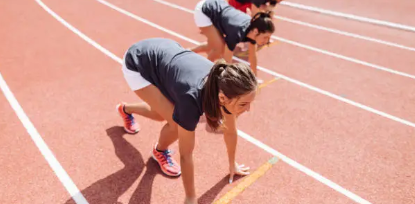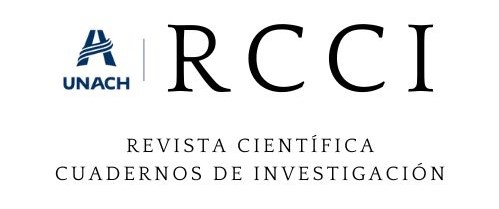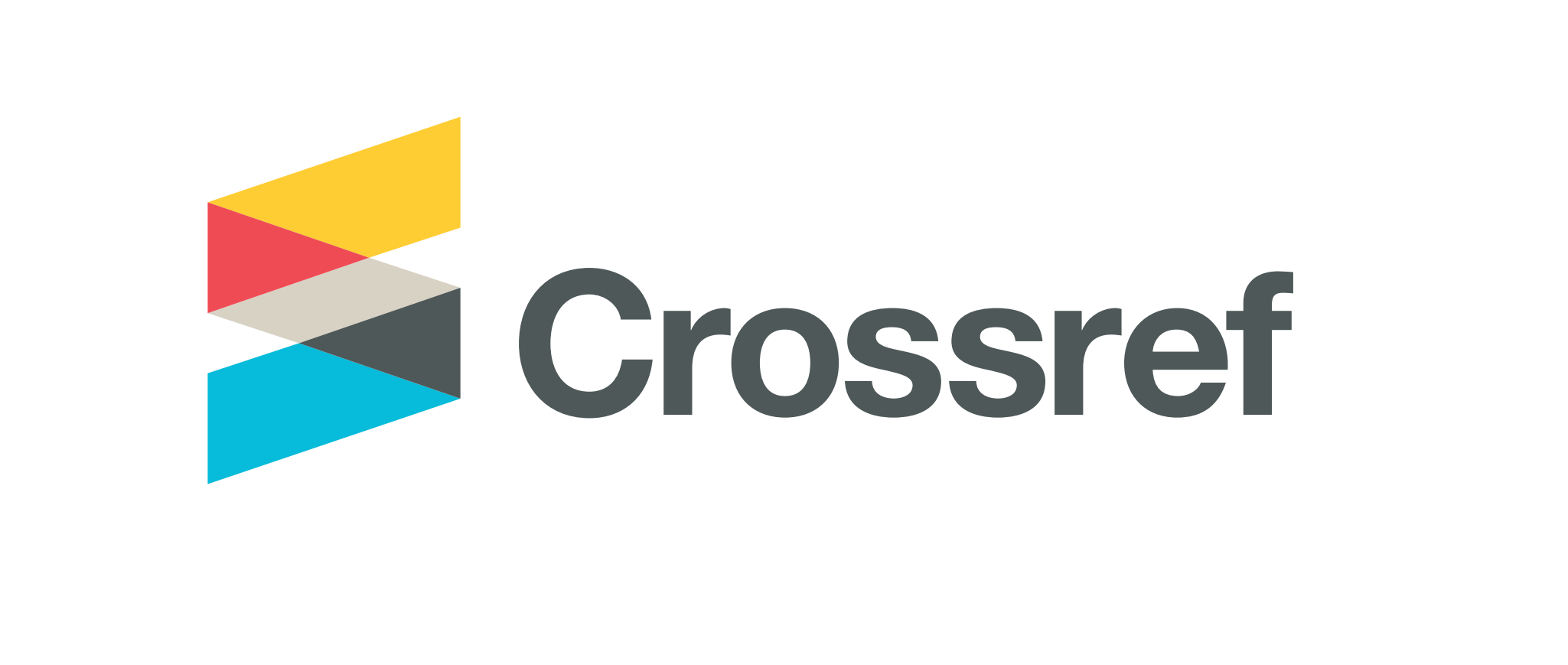Development of physical motor performance in university students through distance Physical Education in the context of COVID-19
DOI:
https://doi.org/10.59758/rcci.2025.3.e44Palabras clave:
Teleeducation, Physical condition, Pandemics, Teaching strategies, Evaluation, Educational AdaptationResumen
Objective: to evaluate the effects of distance physical education on the motor performance of university students during the COVID-19 pandemic. Methodology: study quantitative, correlational and longitudinal design. A total of 103 university students were examined, following a 12-week program divided into three stages, using online distance education. Measurements included abdominal endurance strength, upper waist quick strength, lower extremity explosive strength, and recovery from physical stimulus. Data from weeks 2 (diagnostic), 8 (partial assessment) and 13 (final assessment) were compared. Non-parametric and descriptive statistics were used for the analysis. Results: significant changes were observed in body weight, unobstructed long jump distance and pulse rate before and after the session. Conclusions: distance physical education had positive effects on body weight reduction, development of explosive strength in the lower extremities and improvement of recovery capacity in university students.
Descargas
Referencias
Abeer, R.; Rania, A.; Sherrin M.; Malek J. & Mona A. (2021). Physical fitness training program using electronic simulation games to foster psychological health among university students during COVID-19 pandemic. International Journal of Human Movement and Sports Sciences, 9(3), 421–427. https://doi.org/10.13189/saj.2021.090305
Akbar, S.; Soh, K. G.; Nasiruddin, N.; Bashir, M.; Cao, S. & Soh, K. L. (2021). Effects of neuromuscular training on athletes physical fitness in sports: A systematic review. Frontiers in Physiology, 13, 1-43. https://doi.org/10.3389/fphys.2022.939042
Ali, M.; Kundra, S.; Alam, M. & Alam, M. (2021). Investigating stress, anxiety, social support and sex satisfaction on physical education and sports teachers during the COVID-19 pandemic. Heliyon, 7, 1–8. https://doi.org/10.1016/j.heliyon.2021.e07860
Almonacid-Fierro, A.; Vargas-Vitoria, R.; Mondaca U., J. y Sepúlveda-Vallejos, S. (2021). Prácticas profesionales en tiempos de pandemia Covid-19: Desafíos para la formación inicial en profesorado de Educación Física. Retos, 42, 162-171. https://recyt.fecyt.es/index.php/retos/index
Almonacid-Fierro, A.; Philominraj, A.; Vargas-Vitoria, R. y Montoya G., E. (2022). Teaching in Physical Education during Pandemic COVID-19: A Study of University Teachers. International Journal of Human Movement and Sports Sciences, 10(5), 973-981, https://doi.org/10.13189/saj.2022.100514
Batez, M. (2021). ICT Skills of University Students from the Faculty of Sport and Physical Education during the COVID-19 Pandemic. Sustainability, 13(4), 1711. https://doi.org/10.3390/su13041711
Brien, N.; O’Brien, W.; Costa, J. & Adamakis, M. (2022). Physical education student teachers’ wellbeing during Covid-19: Resilience resources and challenges from school placement. European Physical Education Review, 28(4), 873 - 889. https://doi.org/10.1177/1356336X221088399
Bustamante-Ara, N.; Russell J.; Godoy-Cumillaf A.; Merellano-Navarro E. y Uribe N. (2020). Rendimiento académico, actividad física, sueño y género en universitarios durante la pandemia-2020. Cultura, Ciencia y Deporte, 17(53), 109-131. https://doi.org/10.12800/ccd.v17i53.1897
Chen, L.; Chen, H. & Zeng, K. (2024). Comparison of Two Models of Distance Education for Lifelong Learning in China. Sustainability, 16(2), 669. https://doi.org/10.3390/su16020669
Chetyrova, L. (2024). On the Fruits of Distant Learning and the Prospects of Higher Education. Review of the Monograph by D. Rogozin and O. Solodovnikova "The Zoom Platform and Madness in Higher Education". Semiotic studies, 4(2), 123-126. https://doi.org/10.18287/2782-2966-2024-4-2-123-126
Dalpati, N.; Jena, S.; Jain, S. & Sarangi, P. (2022). Yoga and meditation, an essential tool to alleviate stress and enhance immunity to emerging infections: A perspective on the effect of COVID-19 pandemic on students. Brain, Behavior & Immunity - Health, 20, 1-8. https://doi.org/10.1016/j.bbih.2022.100420
De La Motte, S.; Lisman, P.; Gribbin, T.; Murphy, K. & Deuster, P. (2017). Systematic Review of the Association Between Physical Fitness and Musculoskeletal Injury Risk: Part 3-Flexibility, Power, Speed, Balance, and Agility. Journal of Strength and Conditioning Research, 33(6), 1723-1735. https://doi.org/10.1519/JSC.0000000000002382
Delito, E. M. S. (2023). The impact of physical activity on academic performance: A comprehensive analysis. International Journal of Advanced Research in Science, Communication and Technology, 3(1), 702-707. https://doi.org/10.48175/ijarsct-11941
Deng, C.; Wang, J.; Zhu, L.; Liu, H.; Guo, Y.; Peng, X.; Shao, J. & Xia, W. (2020). Association of Web-Based Physical Education with Mental Health of College Students in Wuhan During the COVID-19 Outbreak: Cross-Sectional Survey Study. Journal of Medical Internet Research, 22(10), e21301. https://doi.org/10.2196/21301
Durdová, I. & Sekot, A. (2021). Covid-19 versus Physical Activity in the Context of University Students. Studia sportiva, 15(2), 27–36. https://doi.org/10.5817/StS2021-2-3
Duterte, J. (2024). Innovations in distance education practices: a comprehensive review. EPRA International Journal of Multidisciplinary Research, 10(9). 74-77. https://doi.org/10.36713/epra18210
Fang, J.; Teng, P. & Wang, F. (2021). The Impact of Physical Education Classes on Health and Quality of Life during the COVID-19. Applied Sciences. 11(19), 8813. https://doi.org/10.3390/app11198813
Ferreira, W. & Teixeira, F. (2021). Exercícios físicos e rendimento acadêmico: um olhar sobre universitários do ensino superior do Brasil. Journal of Sport Pedagogy & Research, 7(6), 22–27. https://doi.org/10.47863/pwky1204
Flores F., E.; Maureira C., F.; Hadweh B., M.; Gutiérrez D., S. A.; Silva-Salse, A.; Peña-Troncoso, S.; Castillo R., F.; González F., P.; Pauvif C., F.; Bahamondes A., V.; Zapata V., G.; Zavala-Crichton, J. P.; Maureira S., J.; Brevis-Yéber, M. y Lagos O., C. (2021) Nivel de satisfacción de las clases online por parte de los estudiantes de Educación Física de Chile en tiempos de pandemia. Retos, 41, 123-130. https://recyt.fecyt.es/index.php/retos/index
Fort-Vanmeerhaeghe, A.; Romero-Rodríguez, D.; Lloyd, R.; Kushner, A. & Myer, G. (2016). Integrative Neuromuscular Training in Youth Athletes. Part II: Strategies to Prevent Injuries and Improve Performance. Strength and Conditioning Journal, 38, 9–27. https://doi.org/10.1519/SSC.0000000000000234
Gaspari, V.; Bogdanis, G.; Panidi, I.; Konrad, A.; Terzis, G.; Donti, A. & Donti, O. (2024). The Importance of Physical Fitness Parameters in Rhythmic Gymnastics: A Scoping Review. Sports, 12(9), 248. https://doi.org/10.3390/sports12090248
Godara, H. (2016). Effect of Weight Training Programme on Motor Fitness Components of School Students. International Journal of Research, 3(17), 1852-1858. https://journals.pen2print.org/index.php/ijr/article/view/7772/7533
Guevara L.; M. E.; Cepeda Silva, N. de los Ángeles.; Molina Guevara, G. E.; Peñafiel Luna, A. C.; Caiza Lema, S. J. & Bonilla Ayala, J. G. (2025). Academic performance and sports habit in university students. Salud, Ciencia Y Tecnología, 5, 1439. https://doi.org/10.56294/saludcyt20251439
Jumareng, H.; Setiawan, E.; Patah, I. A.; Aryani, M. & Asmuddin, R. A. (2021). Online Learning and Platforms Favored in Physical Education Class during COVID-19 Era: Exploring Student' Perceptions. International Journal of Human Movement and Sports 9(1), 11-18. https://doi.org/10.13189/saj.2021.090102
Khamzatova, E.; Gadzhieva, T. & Akieva, Z. (2024). Prospects for using distance learning technologies in a modern educational institution. Ekonomika i upravlenie: problemy, resheniya, 9/14(150), 194–199. https://doi.org/10.36871/ek.up.p.r.2024.09.14.022
León-Reyes, B. B.; Arias Villacres, G. E. y León, M. C. (2021b). Capítulo 4. Utilización de las herramientas tecnológicas para la enseñanza de la Cultura Física en tiempos de pandemia. En Agenda Nacional de Investigación Educativa (Eds.), Investigación educativa en el Ecuador, Vol. 1, pp. 50-64. Universidad Nacional de Educación. https://repositorio.unae.edu.ec/items/b13da7c3-2061-4dd4-b02e-557444545f9c
León-Reyes, B. B.; Kakiyama, T. y Piz-Herrero, Y. (2023). El papel de la virtualización de los procesos educativos en la Educación Física. Portal de la Ciencia, 4(3), 270–285. https://doi.org/10.51247/pdlc.v4i3.391
León-Reyes, B. B.; Reyna, W. E. M.; Arias, G. J. H. & César-León, M. (2021a). Study of overweight and obesity in students of the Technical University of Machala. Arrancada, 21(38), 146-158. https://revistarrancada.cujae.edu.cu/index.php/arrancada/article/view/360
Levytska, L. (2024). Features of the implementation of distance educational technologies in the educational process of a higher school. Visnyk Taras Shevchenko National University of Kyiv. Pedagogy, 1(19), 30-42. https://doi.org/10.17721/2415-3699.2024.19.06
Mehr, R.; Karimian, A.; Abdullahzadeh, M. & Bakhshian, F. (2024). Teachers and Counselors Talk: The Psychological Impact of COVID-19 School Closures on Secondary School Students. The Journal of School Health, 94(10) 957-964. https://doi.org/10.1111/josh.13501
Merino-Campos, C. & Del-Castillo, H. (2025). Impact of COVID-19 lockdown on physical activity and performance in K-12 physical education: A systematic review. Journal of Education and e-Learning Research, 12(1), 1–20. https://doi.org/10.20448/jeelr.v12i1.6328
Mora-González, J.; Esteban‐Cornejo, I.; Cadenas-Sánchez, C.; Migueles, J.; Molina-García, P.; Rodriguez-Ayllon, M.; Henriksson, P.; Pontifex, M.; Catena, A. & Ortega, F. (2019). Physical Fitness, Physical Activity, and the Executive Function in Children with Overweight and Obesity. The Journal of Pediatrics, 208, 50–56. https://doi.org/10.1016/j.jpeds.2018.12.028
Morādi, A.; Damirchi, S.; Narimani, M.; Esmaeilzadeh, S.; Dziembowska, I.; Azevedo, L. & Prado, W. (2019). Association between Physical and Motor Fitness with Cognition in Children. Medicina, 55(1), 7. https://doi.org/10.3390/medicina55010007
Olanescu, M.; Suciu, M.; Scheuer, C. & Periş, M. (2022). COVID-19 Pandemic: Impediment or Opportunity? Considerations Regarding the Physical-Health Impact and Well-Being among Romanian University Students. Applied Sciences, 12(18), 8944. https://doi.org/10.3390/app12188944
Panenggak N., S. R.; Nurhasan, N.; Al Ardha, M. A.; Bana, P.; Ristanto, K. O.; Rizki, A. Z.; Utomo, R. S.; Yang, C. B. & Lin, W. J. (2022). University Students' Daily Activities and Physical Fitness during COVID-19 Pandemic. International Journal of Human Movement and Sports Sciences, 10(2), 166 - 172. https://doi.org/10.13189/saj.2022.100205
Ramos-Campo, D. J. & Clemente-Suárez, V. J. (2024). The Correlation between Motor Skill Proficiency and Academic Performance in High School Students. Behavioral Sciences, 14(7), 592. https://doi.org/10.3390/bs14070592
Randall, K.; Ford, T.; Kwon, K.; Sisson, S.; Bice, M.; Dinkel, D. & Tsotsoros, J. (2021). Physical Activity, Physical Well-Being, and Psychological Well-Being: Associations with Life Satisfaction during the COVID-19 Pandemic among Early Childhood Educators. International Journal of Environmental Research and Public Health, 18(18), 9430. https://doi.org/10.3390/ijerph18189430
Ryan A.; Hay, J. A.; Liu, J.; Faught, B. E.; Engemann, E. & Cairney, J. (2015). The Influence of Aerobic Fitness on the Relationship between Academic Performance and Motor Proficiency. Universal Journal of Public Health, 3(4), 145-152. https://doi.org/10.13189/ujph.2015.030402
Redondo-Flórez, L.; Ramos-Campo, D. J. & Clemente-Suárez, V. J. (2022). Relationship between Physical Fitness and Academic Performance in University Students. International Journal of Environmental Research and Public Health, 19(22), 14750. https://doi.org/10.3390/ijerph192214750
Shahzad, U.; Mehmood, M.; Mubashar, M.; Ilyas, M. & Mass, Q. (2024). Comparison of Muscular Strength, Speed, Flexibility and Agility among Professional and Sub-Professional Players of Basketball. Journal of Asian Development Studies 13(2), 1445-1456. https://doi.org/10.62345/jads.2024.13.2.115
Slavinski, T.; Bjelica, D.; Pavlovi´ c, D. & Vukmirovi´ c, V. (2021). Academic Performance and Physical Activities as Positive Factors for Life Satisfaction among University Students. Sustainability, 13, 497, 1-17. https://doi.org/10.3390/su13020497
Song, Q. & Tang, W. (2024). Research on the Reform of Modern Distance Education Teaching Model from the Perspective of Digital Economy. Adult and Higher Education, 6(3), 110–118. https://doi.org/10.23977/aduhe.2024.060317
Sözler, S. (2024). The Structure of Open and Distance English Language Teaching Models: A Follow Up Study 2018–2023. Journal of Higher Education and Science, 14(1), 84-92. https://doi.org/10.5961/higheredusci.1364045
Tortella, G.; Seabra, A.; Padrão, J.; & Juan, R. (2021). Mindfulness and Other Simple Neuroscience-Based Proposals to Promote the Learning Performance and Mental Health of Students during the COVID-19 Pandemic. Brain Sciences, 11(5), 552. https://doi.org/10.3390/brainsci11050552
Varea, V.; González‐Calvo, G. & García-Monge, A. (2020). Exploring the changes of physical education in the age of Covid-19. Physical Education and Sport Pedagogy, 27, 32-42. https://doi.org/10.1080/17408989.2020.1861233
Yu, J. & Jee, Y. (2021). Analysis of Online Classes in Physical Education during the COVID-19 Pandemic. Education Sciences, 11(1), 1-14. http://dx.doi.org/10.3390/educsci11010003
Zakharova, N.; Frumina, S.; Lobuteva, L. & Alwaely, S. (2024). The specifics of integrating distance learning technologies with traditional classroom instruction: How to design educational curricula in modern education? Heliyon, 10(20), 1-12. https://doi.org/10.1016/j.heliyon.2024.e38740
Zheng, W.; Ma, Y. Y. & Lin, H-L. (2021). Research on Blended Learning in Physical Education During the COVID-19 Pandemic: A Case Study of Chinese Students. SAGE Open, 11(4), 1-12. https://doi.org/10.1177/21582440211058196
Zhou, M. (2024). Mode Characteristics and Path Selection of Distance Education in Digital Age. Journal of Higher Education Teaching, 1(5), 129-136. https://doi.org/10.62517/jhet.202415522

Publicado
Número
Sección
Categorías
Licencia
Derechos de autor 2025 Borys Bismark León Reyes, Daniel David Hechavarria Cardero, Marjorie Fabiola Romero Granda, Vicente Anderson Aguinda Cajape, Yaidelys Piz Herrero, Camilo Fernando Leon Reyes (Autor/a)

Esta obra está bajo una licencia internacional Creative Commons Atribución-NoComercial-CompartirIgual 4.0.






